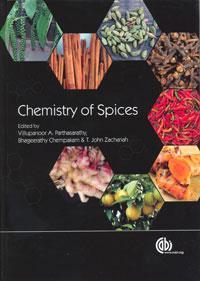Chemistry of spices
Chemistry of spices
V A Parthasarthy, B Chempakam and T J Zachariah (eds)
Wallingford, UK: CABI Publishing 2008 | 400pp | ?95.00 (HB) ISBN 9781845934059
Reviewed by K V Peter

Spices impart flavour, colour and taste to food preparations, and their antioxidant properties have been used to preserve perishable items since time immemorial.
The chemistry of volatiles providing aroma to food, oleoresins imparting taste, and pigments giving splashes of colour are all reviewed by working scientists at the Indian institute of spices.
Spices like black pepper, cardamom, ginger, turmeric, cinnamon, clove, nutmeg, coriander, cumin, fennel, fenugreek, paprika and chilli, vanilla, star anise, aniseed, and curry and bay leaves are discussed in the context of their intrinsic chemical values.
Turmeric is one spice which has use in the human body from birth, protecting the umbilical cord from infection to the prevention of quick decay of corpses in tropical climates. The emergence of spices as a medicine is only marginally discussed in this outstanding book.
This book will be an asset to scientists, postgraduate students, and those working in the spice and food industries.
Further Reading
K V Peter, Handbook on herbs and spices (three volumes, 2004-2006). CRC Press. ISBN 9780849312175 (Vol 1); 9780849325359 (Vol 2); 9780849391552 (Vol 3)
E A Weiss (ed), Spice crops (2002). CABI Publishing. ISBN 9780851996059












No comments yet